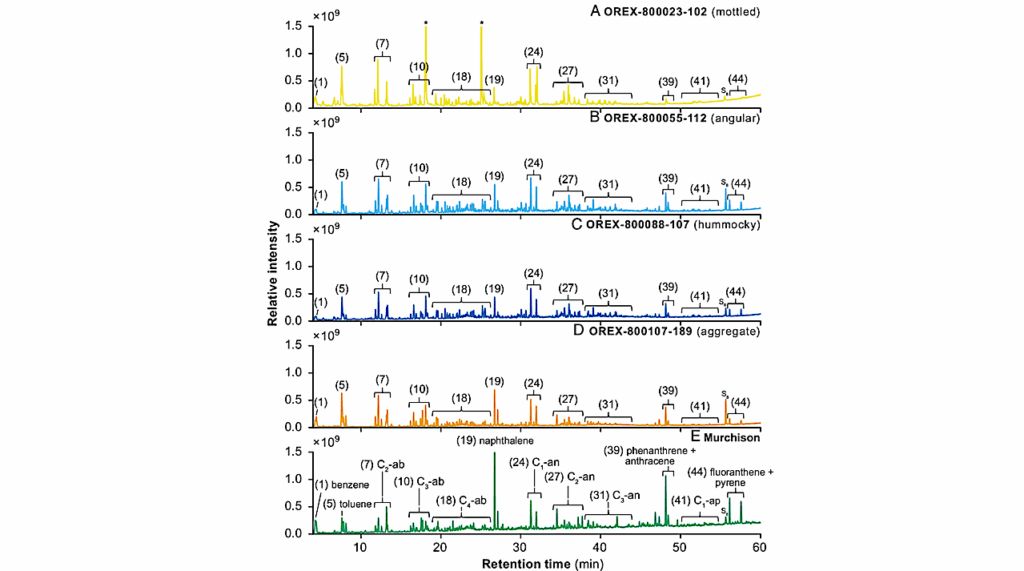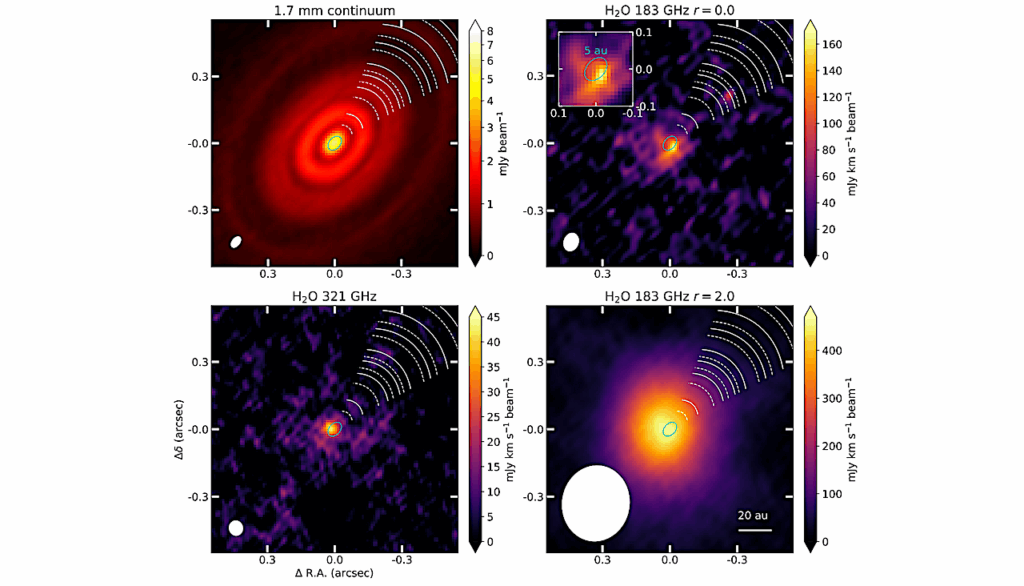Vacuum Ultraviolet Photodesorption and Photofragmentation of Formaldehyde-containing Ices

Non-thermal desorption from icy grains containing H2CO has been invoked to explain the observed H2CO gas phase abundances in ProtoPlanetary Disks (PPDs) and Photon Dominated Regions (PDRs).
Photodesorption is thought to play a key role, however no absolute measurement of the photodesorption from H2CO ices were performed up to now, so that a default value is used in the current astrophysical models. As photodesorption yields differ from one molecule to the other, it is crucial to experimentally investigate photodesorption from H2CO ices.
We measured absolute wavelength-resolved photodesorption yields from pure H2CO ices, H2CO on top of a CO ice (H2CO/CO), and H2CO mixed with CO ice (H2CO:CO) irradiated in the Vacuum UltraViolet (VUV) range (7-13.6~eV). Photodesorption from a pure H2CO ice releases H2CO in the gas phase, but also fragments, such as CO and H2. Energy-resolved photodesorption spectra, coupled with InfraRed (IR) and Temperature Programmed Desorption (TPD) diagnostics, showed the important role played by photodissociation and allowed to discuss photodesorption mechanisms. For the release of H2CO in the gas phase, they include Desorption Induced by Electronic Transitions (DIET), indirect DIET through CO-induced desorption of H2CO and photochemical desorption.
We found that H2CO photodesorbs with an average efficiency of ∼4−10×10−4 molecule/photon, in various astrophysical environments. H2CO and CO photodesorption yields and photodesorption mechanisms, involving photofragmentation of H2CO, can be implemented in astrochemical codes. The effects of photodesorption on gas/solid abundances of H2CO and all linked species from CO to Complex Organic Molecules (COMs), and on the H2CO snowline location, are now on the verge of being unravelled.
Géraldine Féraud, Mathieu Bertin, Claire Romanzin, Rémi Dupuy, Franck Le Petit, Evelyne Roueff, Laurent Philippe, Xavier Michaut, Pascal Jeseck, Jean-Hugues Fillion
(Submitted on 20 May 2019)
Comments: ACS Earth and Space Chemistry; Complex Organic Molecules (COMs) in Star-Forming Regions special issue
Subjects: Astrophysics of Galaxies (astro-ph.GA); Solar and Stellar Astrophysics (astro-ph.SR); Chemical Physics (physics.chem-ph)
DOI: 10.1021/acsearthspacechem.9b00057
Cite as: arXiv:1905.08223 [astro-ph.GA] (or arXiv:1905.08223v1 [astro-ph.GA] for this version)
Submission history
From: Géraldine Féraud
[v1] Mon, 20 May 2019 17:25:16 UTC (508 KB)
https://arxiv.org/abs/1905.08223
Astrobiology, Astrochemistry








